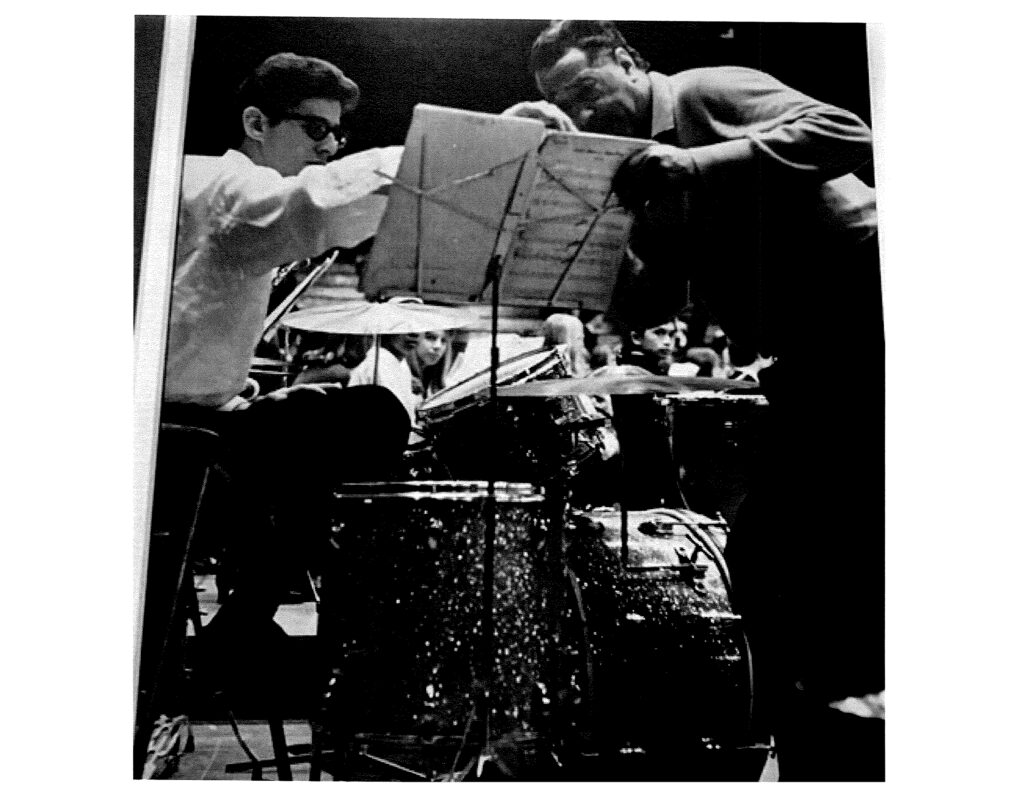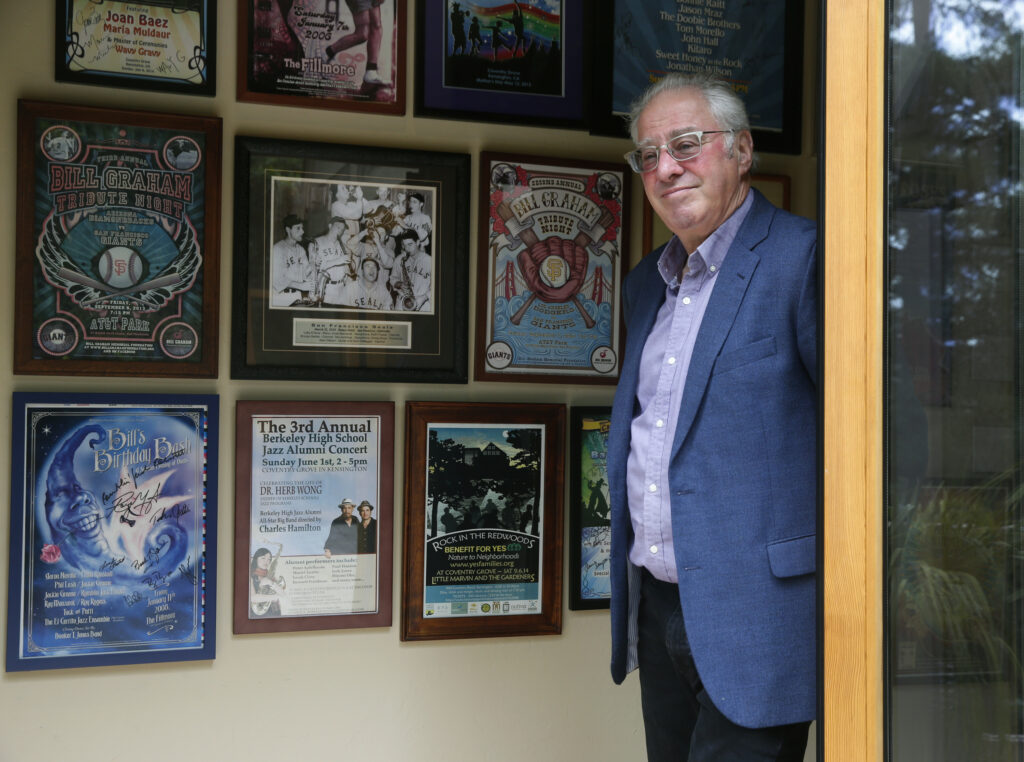
Thelonious Monk is back.
Modern jazz’s most revered and recorded composer died in 1982 at the age of 67, but a new live album titled “Palo Alto” was set to be released at the end of July by Universal Music as a reminder of his prowess as a pianist and bandleader. Then just days before giddy jazz fans got to hear the 1968 concert recorded at Palo Alto High School, Universal announced that the album was postponed, with word eventually surfacing that the project had been torpedoed by a dispute between Monk’s estate and his previous label, Columbia (now owned by Sony).
“It was a big surprise,” Doug Holloway, one of the album’s producers, told The Chronicle. “It came out of left field.”
“There was some confusion about whether or not Thelonious Monk even had a record deal at the time of the recording,” which led to a time-out “while everything was worked out between different record companies and the Thelonious Monk Estate,” explained Danny Scher, the precocious impresario who orchestrated the gig as a Paly High junior.
Neither Holloway nor Monk’s son, jazz and R&B drummer T.S. Monk, provided details about the agreement that put “Palo Alto” back into circulation, but the album will now be available Sept. 18 via Impulse! Records on CD and LP as well as in a digital format via Sony’s Legacy Recordings.
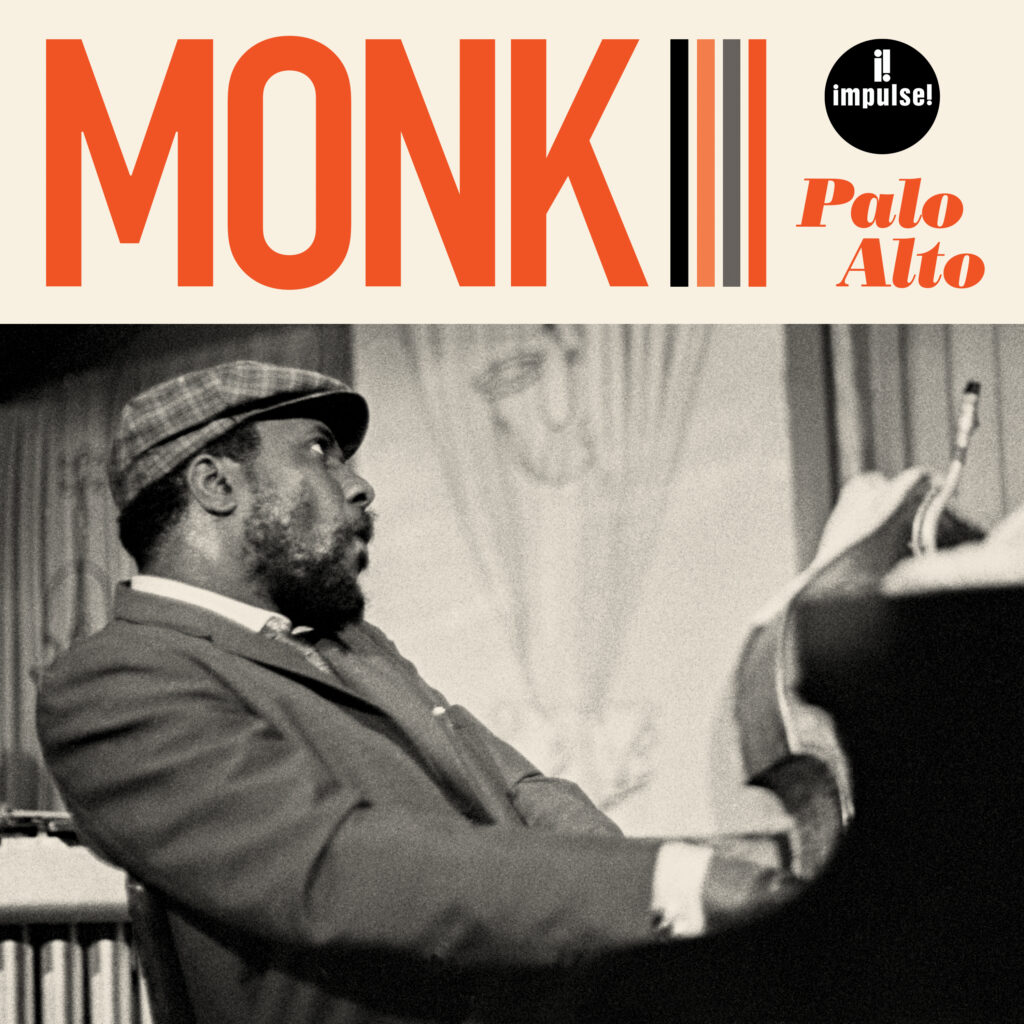
For Scher, who held onto the concert tapes for half a century, the denouement is a desperately needed bright spot in a plague-afflicted year. He hails the rescheduled release as a win-win “leading to everyone getting along and a joyous outcome,” much like the response to the performance itself in 1968.
If Scher attributes heightened social significance to “Palo Alto” it’s because the concert itself took on a potent symbolic role in the midst of another year marked by assassinations, war and riots. The music itself, a 47-minute tour de force by a well-traveled band at the peak of its prowess, ranks amongst Monk’s best with his long-running quartet.
“Everyone was in the zone,” T.S. Monk said. “The thing I realized about Thelonious, he was really a live artist. He made great studio records, but he was basically under-recorded, so he concentrated on his live performances.”
The tale of how the pianist’s quartet came to perform in Palo Alto High School’s auditorium on a rainy fall Sunday afternoon adds an irresistible backstory to a thrilling new entry in one of the 20th century’s most consequent discographies.
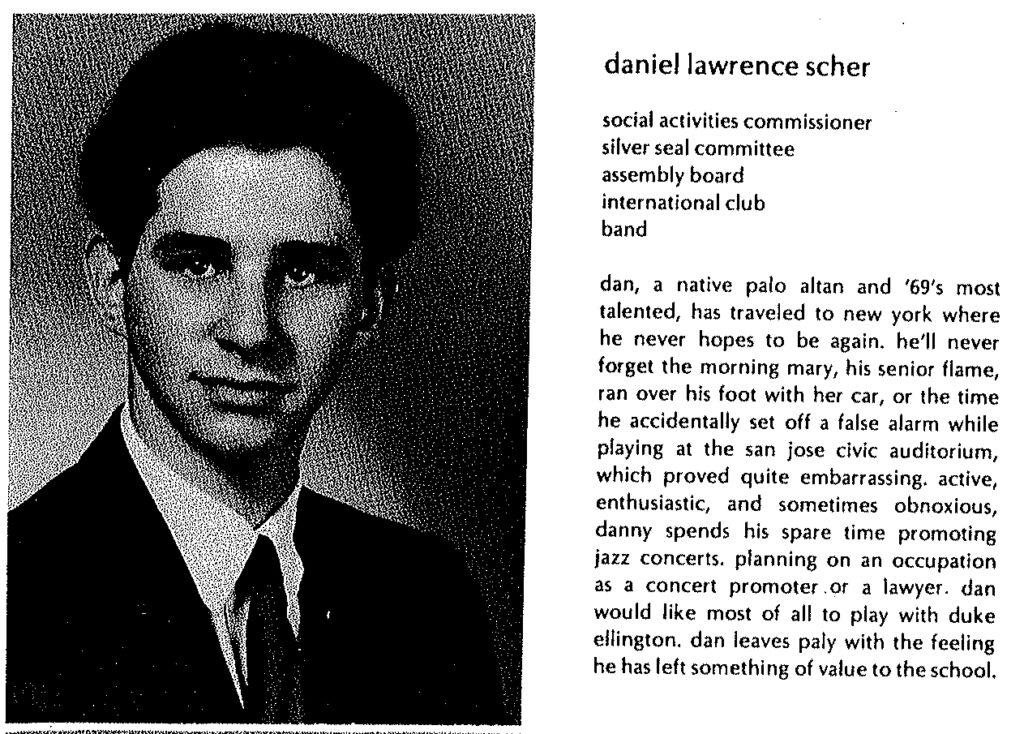
Masterminded by a 16-year-old Scher, who was already demonstrating the skills that would make him an essential part of Bill Graham’s production empire, Monk’s performance took place at a particularly fraught moment in the often difficult relationship between the university town and its redline-defined doppelgänger, East Palo Alto, a predominantly Black neighborhood.
An ingenious composer responsible for more than four-dozen tunes that form a cornerstone of the jazz repertoire, Monk didn’t know he was serving as a bridge between the Bayshore Highway-divided communities. The Oct. 27, 1968 concert took place just days before an election that included an ultimately unsuccessful initiative to rechristen unincorporated East Palo Alto as Nairobi in honor of Kenya’s capital.
In bringing his band down the Peninsula for a matinee performance before a gig that night at North Beach’s Jazz Workshop in San Francisco, “Thelonious contributed directly to improving race relations during a tense situation,” wrote Robin D. G. Kelley in his authoritative biography “Thelonious Monk: The Life and Times of An American Original.”
It’s hard to overstate how chaotic the world had turned during that annus horribilis. The intractable war in Vietnam showed no signs of waning. The massive May protests in France drove President Charles de Gaul from office and almost toppled the Fifth Republic. Soviet bloc tanks crushed the Prague Spring and in the U.S., the assassinations of Rev. Martin Luther King Jr. and Sen. Robert Kennedy were accompanied by protests, riots, and a general sense that the wheels were coming off the jalopy.
Scher, who now runs his own production company called DanSun Productions in Berkeley, just wanted to present one of his favorite musicians, and he figured attracting fellow jazz fans from East Palo Alto was a good idea, particularly when ticket sales didn’t meet his expectations.
“I was a newspaper boy for the Palo Alto Times so I put concert posters in my newspaper bag and I’m riding around East Palo Alto putting them up,” Scher recalled. “The police are cruising by saying ‘Kid, you better get out of here. It’s not safe for you.’ I’m talking to people and they’re not believing that Monk is coming to Paly High, so I tell them don’t buy a ticket. Come by the auditorium and wait till you see him.”
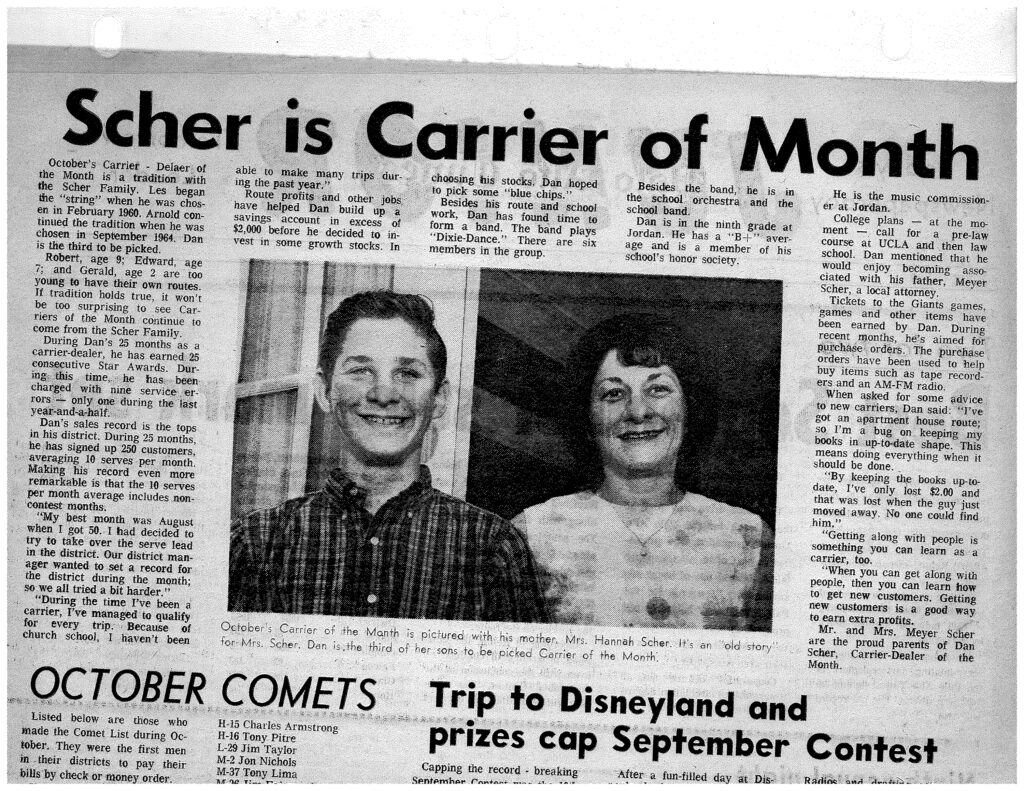
On the day of the show a light rain was falling and there were plenty of seats still available, but “the parking lot was full, and there were lots of folks from East Palo Alto waiting to see what would happen,” Scher said. Then Monk and his band show up “in our family van driven by my older brother with the bass sticking out of the window. My mom took lunch orders and brought food back for the band after soundcheck.”
For one afternoon at least, a diverse audience of jazz fans from both sides of the highway came together to share a stellar set by Monk, bassist Larry Gales, drummer Ben Riley, and the gruffly lyrical tenor saxophonist Charlie Rouse, a player too often underrated during his long tenure with the pianist.
The concert’s enduring mystery is the identity of the man who actually recorded the show. Scher said that an African American janitor at the school offered to tune the piano in exchange for permission to record Monk’s set. News of the album’s imminent release earlier this year sparked a search for his name, but he remains anonymous.
“This was all before computers and all the school records are on paper, if they even still exist,” Scher said. “I would have thought he would have bragged to his children and grandchild, and that someone would have heard about it through family lore. Our working title for the album credit is Monk’s Recording Custodian.”
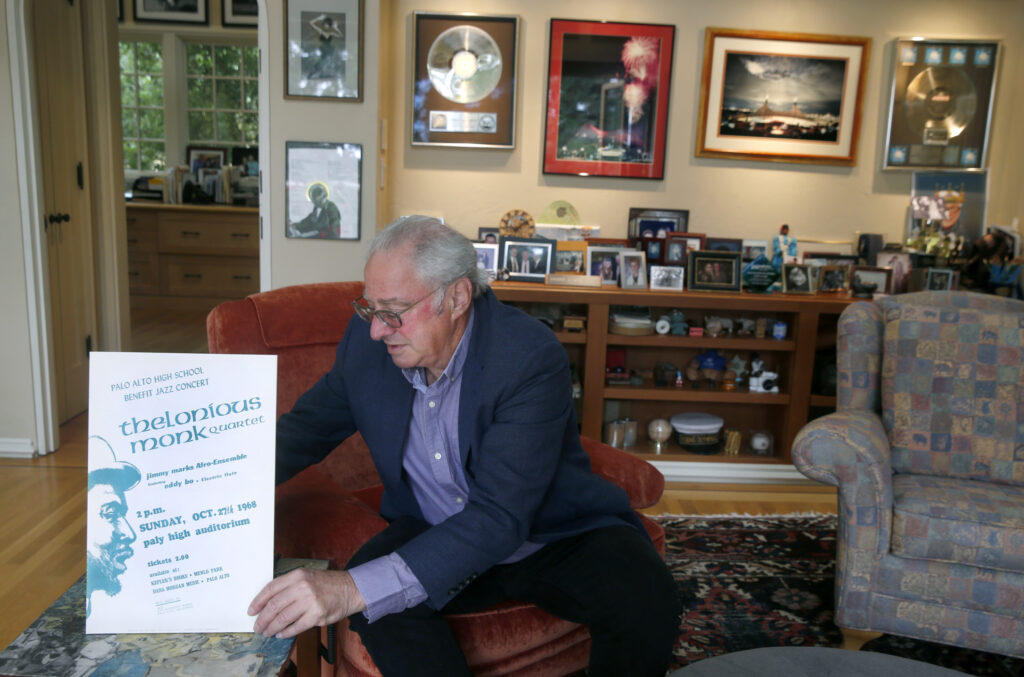
The concert was actually a triple bill that also featured two opening bands well-established in the area, the Jimmy Marks Afro-Ensemble and Smoke, a collective quintet inspired by Ornette Coleman. Marks, a drummer, poet, and owner of the Menlo Park hair salon Markstyle, remembers being thrilled to get the call about the concert.
“I don’t think the band even asked if we were getting paid, that’s how exciting it was,” Marks recalled.
Smoke trumpeter Fred Berry, who went on to direct the Stanford Jazz Orchestra for decades until retiring in 2017, didn’t have a chance to talk to Monk himself, but he witnessed a characteristically gnomic exchange with the famously taciturn pianist.
“One young lady asked him if the rain affected the way he played,” Berry said. “He gave her a strange look and said, ‘I hope so.’”
